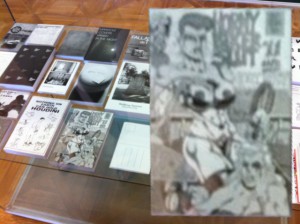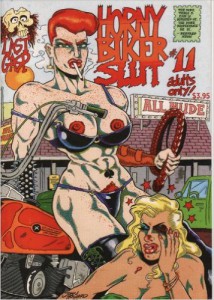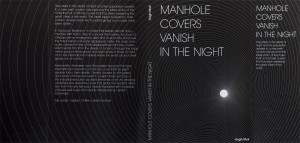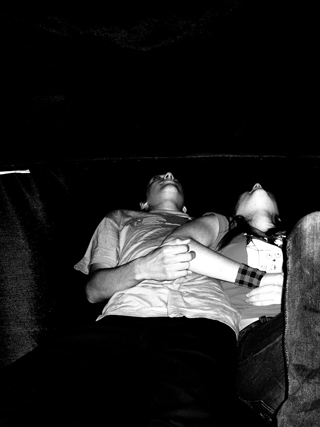Never Odd Or Even (2005), Mariana Castillo Deball, Revolver Publishing
Scanning through all the possible titles in the list, I landed on something I recognised: ‘Never Odd Or Even’, by Mariana Castillo Deball (M.C.D.) I found myself attracted to it, because it reminded me of an album I used to listen to a lot when I was younger. Initially, I really didn’t like the front cover’s typography, but when I flipped it open, I found myself very confused about the way the book was structured. When I inspected the other pages, I decided this would be my book of choice. I thought the back cover and inside looked very interesting and beautiful, but I didn’t understand why it looked the way it did, what purpose it served, if it even had any.
When I started looking online, I could only find a lot of information about the second volume, but the first volume only gave me two not very detailed links, one to the art foundation’s website and one to the publisher’s website. It became clear to me that it was a ‘book’ made up out of dust covers. It was some kind of art publication. The fact that it was sheets of paper specifically designed to protect books, protected by a layer of plastic seemed absurd and quite funny to me. Even though my main attraction was the construction of it, there are a lot of different styles of graphic design found throughout, which I found to be quite interesting, both together and on their own.
First, I indexed all the individual pages of my copy as follows. By doing this, it became clear to me that there is a discrepancy between the number of covers that are contained in my copy and what the publisher advertises. My copy only accounts for as much as twenty-two covers, whereas it should have been twenty-three. This number includes the outer cover, following the counting system of the second volume. Otherwise, there are two pages missing. Also, none of the books in this list exist in reality. They seem to do what art is known to do: imitate life. The publication kind of looks like an exhibition in itself and it actually is almost some sort of catalogue of the actual exhibition it is part of. I can’t support this factoid with photographic evidence, as there are no accounts to be found on the web. The exhibition seems to have taken place before museums, artists, or audiences started to upload any documentation on the web, but based on what is available online for the second volume, the before mentioned seems highly probable.
So there were two minor design mysteries: it is unclear why the publication is formatted the way it is, but it is also unknown what the content of 1/23 of its totality is.
Could this missing piece hold the key to unravelling this mystery? Highly unlikely, but it remains a point of curiosity nonetheless.
To understand Volume I (2005) with as little information as there is available, we must resort to looking at Volume II (2011). With six years separating the two, there are some differences, but integrally they appear to carry the same concept — it’s a series and not two separate works after all. Volume II has some colour prints and more ‘pages’. Although I admit that I don’t know the exact way the exhibition was held in 2005, I think it’s not unreasonable to assume it was very much similar to how it was handled with the second one. To get a better idea of how it would interact with space, here you can have a look at the press release and photo album for the exhibition at the Grimmuseum in 2011.
Never Odd Or Even is a collection of dust covers for non-existing books and in the exhibition, the contents of these non-existing books are explored and theorised about, in works and performances that use text as their primary medium..
In an interview, Manuel Raeder has made clear that the outer cover’s typography has been designed by the artist herself — based on Tangram puzzle shapes — and the pages were done by the artists she invited to participate in this collaborative work. The latter being pretty clear just by reading the flap of the outer cover. Finding out about the inspiration for the type made me appreciate it a bit more. The collaboration apparently also extended into the exhibition surrounding the publication, working together on shaping how the public experiences the work. The second volume was published through Raeder’s publishing house ‘Bom Dia Boa Tarde Boa Noite’.
I contacted Raeder, with regards to the missing page, who worked on Never Odd Or Even together with M.C.D. I was really happy to see that he was very quick to respond. However, he didn’t readily have the information on hand, so he told me he’d forward my question to some others. I didn’t contact M.C.D., as she doesn’t seem to have any contact information freely available.
When I inspected some pictures from the Brno 2016 exhibition, I noticed that not only did they exhibit the first volume of the work, but that the missing cover was actually squarely visible.
After doing a bit of C.S.I.-style zooming and enhancing, the title of the page appears to be a comic-book cover, titled ‘Horny Biker Slut #11’. This quirky title and cartoon imagery could make sense of the reason why someone decided to steal it from my copy, however inexcusable it may be. But there is one thing a bit strange about this particular cover. When I googled it, it actually exists and you can purchase it from Amazon for $19.99 + shipping. The fact that this title actually exists in real life makes it different from all the other titles, creating a whole new question altogether.
By this time, Mrs Schryen (someone working for Studio Manuel Raeder) got back to me. She informed me that there were in fact two covers missing; the above mentioned Horny Biker Slut #11, as well as one titled ‘Manhole covers vanish in the night’, which looking back on the Brno pictures, was also squarely visible.
I previously stated the Horny Biker Slut #11 cover existed in real life, but in the full publication version you can see above, it looks to be collaged together with the 11th issue of ‘Contacto Sexual’ on the back and both flaps, and something called ‘Histoire Porno’ along the spine. The other cover appears to reference, word for word, an article from the Guardian, dating back to 2004.
The fact that there is a second cover missing from our library’s copy means that the two volumes seem to be inconsistent in their numbering. The first one doesn’t count the outside cover as a ‘page’ and the second one does.
The artists involved in this project don’t seem to be concerned with consistency, correctness, nor the concrete.










